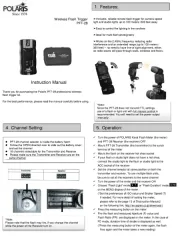Polaris Slingshot SL (2022) Manual
Læs gratis den danske manual til Polaris Slingshot SL (2022) (185 sider) i kategorien Ikke kategoriseret. Denne vejledning er vurderet som hjælpsom af 5 personer og har en gennemsnitlig bedømmelse på 4.8 stjerner ud af 3 anmeldelser.
Har du et spørgsmål om Polaris Slingshot SL (2022), eller vil du spørge andre brugere om produktet?

Produkt Specifikationer
| Mærke: | Polaris |
| Kategori: | Ikke kategoriseret |
| Model: | Slingshot SL (2022) |
Har du brug for hjælp?
Hvis du har brug for hjælp til Polaris Slingshot SL (2022) stil et spørgsmål nedenfor, og andre brugere vil svare dig
Ikke kategoriseret Polaris Manualer










Ikke kategoriseret Manualer
- AJA
- Veridian Healthcare
- Elinchrom
- CaterRacks
- Toparc
- Regula-Werk King
- Lindam
- Hardkorr
- Molotow
- COLBOR
- Bruynzeel
- Westcott
- Adam
- Catler
- SVS
Nyeste Ikke kategoriseret Manualer









